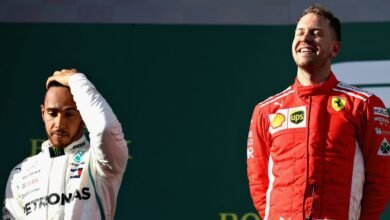What did Jeddah qualifying reveal about the pecking order?


Following on from Japan, Max Verstappen snatched pole away from what looked like being another dominant qualifying performance from McLaren in Saudi Arabia. F1Technical’s senior writer Balazs Szabo takes a look back at last Saturday’s qualifying session to find out the strengths and weaknesses of the top three teams.
Following a tough Bahrain Grand Prix, Red Bull have turned their weekend around in style. Max Verstappen already showed signs of competitiveness across the Friday practice sessions, confirming that the high-speed corners of the Jeddah Corniche Circuit suit his RB21 much more than the traction-dominated Sakhir track.
The reigning champion was right in the mix all through Qualifying, and he started more and more comfortable in his RB as the track surface constantly cooled down. The Dutchman went for two runs after the Q3 red flag, and it proved a masterstroke, his second lap was good enough to take his 46th career pole position.
Although McLaren looked in a league of their own across the Jeddah practice sessions, Lando Norris and Oscar Piastri had to settle for lower places on the grid. The Briton suffered a high-speed crash on his first lap in Q3 while the Melbourne-born driver was unable to surpass Verstappen’s benchmark in the closing stages of qualifying, and wound up second, 0.010s off pole.
Elsewhere, it was not obvious how competitive Mercedes was at the Jeddah Corniche Circuit as the W16 had looked strong in certain conditions, but it had appeared to lack pace in others during practice sessions.
However, qualifying night at Jeddah turned out to be a strong session for the Brackley-based outfit after George Russell came agonisingly close in battle for Jeddah pole. Ultimately, the Briton wound up just a tenth off pole, firmly in the fight with the Red Bull and McLaren ahead.

Comparing the quickest qualifying laps of Verstappen, Piastri and Russell, it is clear to recognize where the weaknesses and strengths of Red Bull’s, McLaren’s and Mercedes’ 2025 F1 cars are to find.
Despite failing to secure pole, Piastri was 52.6 per cent of the lap the quickest while Verstappen proved the fastest in 35.0 per cent and Russell in the remaining 12.4 per cent of the 6.1km long Jeddah Corniche Circuit.
The first sector saw Verstappen set the quickest time, while Piastri and Russell having been 0.123s and 0.177s slower. The Dutchman was the strongest down the main straight, aided by a huge tow from his new team-mate Yuki Tsunoda which massively contributed to his pole position.
However, Piastri was strongest in the tricky first and second corner which was not surprising given McLaren’s dominance in this very section of the track.
The opening two corners proved annoyingly challenging over the weekend, as several teams were unable to start the lap with the optimal temperatures. Ferrari were the team to suffer the most in qualifying, with the Scuderia having lost three tenths of a second alone in the opening two corners which made their qualifying very tricky. Interestingly, in high-fuel configuration, Ferrari could completely solve this issue.
While Russell and Verstappen recorded the best minisectors through the following corners, Piastri proved quickest in the medium-speed Turns 6-7-8. Building on Red Bull’s lower downforce setup, Verstappen ended the final segment of Sector 1 quickest while Russell was quickest at the entry of the banked Turn 13.
The second sector saw Russell emerge quickest, with Piastri 0.074s and Verstappen 0.164s behind. The Melbourne-born driver carried the highest speed at the exit from Turn 13 while the medium-speed Turns 15-16-17 saw the Mercedes man achieve the best minisectors.
Piastri recorded the highest exit speed out of Turn 17, but Verstappen ended the quickest this full-throttle section again.
The closing sector saw Piastri come out on top, with Verstappen 0.027s and Russell 0.112s behind.
Piastri demonstrated McLaren’s utterly dominant downforce levels through Turns 22-23-24, but Verstappen was the quickest once again at the end of the last full-throttle section.
The Australian had the strongest machine through the last corner, proving that the MCL39 managed to keep the tyre temperatures under control despite the long lap.





